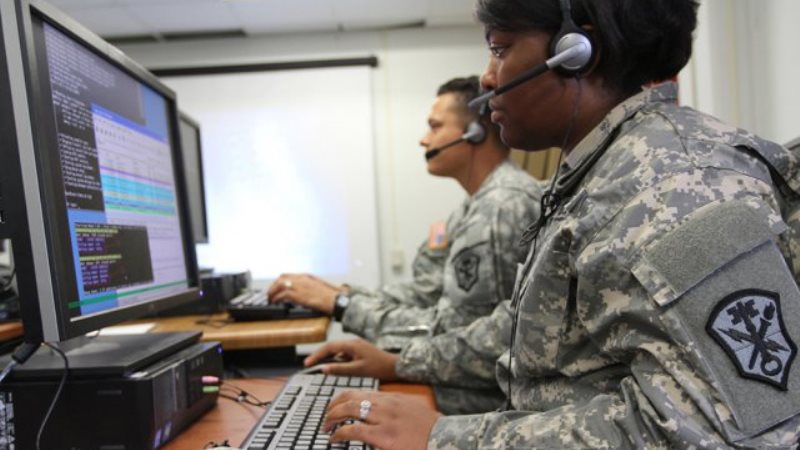
The Army could soon be leveraging more autonomous vehicle capabilities and commercial communications solutions to bring it closer to a goal of persistent communications, persistent intelligence, surveillance, and reconnaissance (ISR), and faster decision speed.
Seth Spoenlein, deputy director of the Space and Terrestrial Communications Directorate (S&TCD) in the Army Communications-Electronics Research, Development and Engineering Center (CERDEC), spoke today on the use of expanding communications technology in the military at an Army Science and Technology Symposium hosted by the National Defense Industrial Association (NDIA).
CERDEC is the Army’s IT and integrated systems center that provides R&D support to “connect and protect the soldier.” S&TCD focuses specifically on tactical communications support, providing “technical solutions for the soldier to perform uninterrupted communications, defensive cyber, and networking to improve maneuver and expeditionary operations.”
Spoenlein spoke on some of the emerging technologies that could see an uptick as the Army looks to improve tactical support and communication in remote locations.
Autonomous Vehicle Connectivity
Spoenlein discussed the expansion of autonomous vehicles in the Army–which currently require more direct links to a control center–but said a shift in bandwidth requirements could be coming as they develop machines that operate more independently.
“There’s a lot of emphasis on AI, machine learning…and so today in the initial phases, you will probably see a vehicle with a lot of sensors on it, but still have a fair amount of remote control, requiring a data link to look at all the sensors,” Spoenlein said. “As we get better at autonomy and put more autonomy onto the vehicle, that will require less coordination back, which changes all the comms and changes all the types of data.”
He said this could impact the potential “roadmap” into the future. Whereas the vehicles may initially require more high-bandwidth communications equipment, Spoenlein said that more autonomous operations may require less robust connections in the future.
Commercial Communications Technology
“In the network and the communications space, the plan is to leverage commercial technology as much as possible, and then build unique, hardened, resilient things that are military,” Spoenlein said.
He likened the use of commercial technology in the Army to commercial cell phone service, where users have an “expectation management of what your service would be” in LTE environments, versus 4G, 3G, or 2G environments. You wouldn’t watch Netflix with lower connectivity, he noted.
He expects the Army to adopt that same expectation management–knowing when connectivity environments are more difficult, the emphasis shifts to data protection and security.
“In that philosophy, in that strategy, that means when we adopt some of the commercial stuff, we give up some of the electronic warfare hardening,” he said. “We’re consciously making a decision that I’m now going to be jammed in those environments. And that might be okay. What we don’t want to do is give up the data.”
The understanding, Spoenlein said, is that, “If I’m in a jamming-type environment, I would move down to something that’s protected and hardened.”
“You’ll still see investments in that space to take commercial things and harden them,” he said, noting that the Army must remain conscious that less-robust commercial tech may not be the solution in all circumstances.
